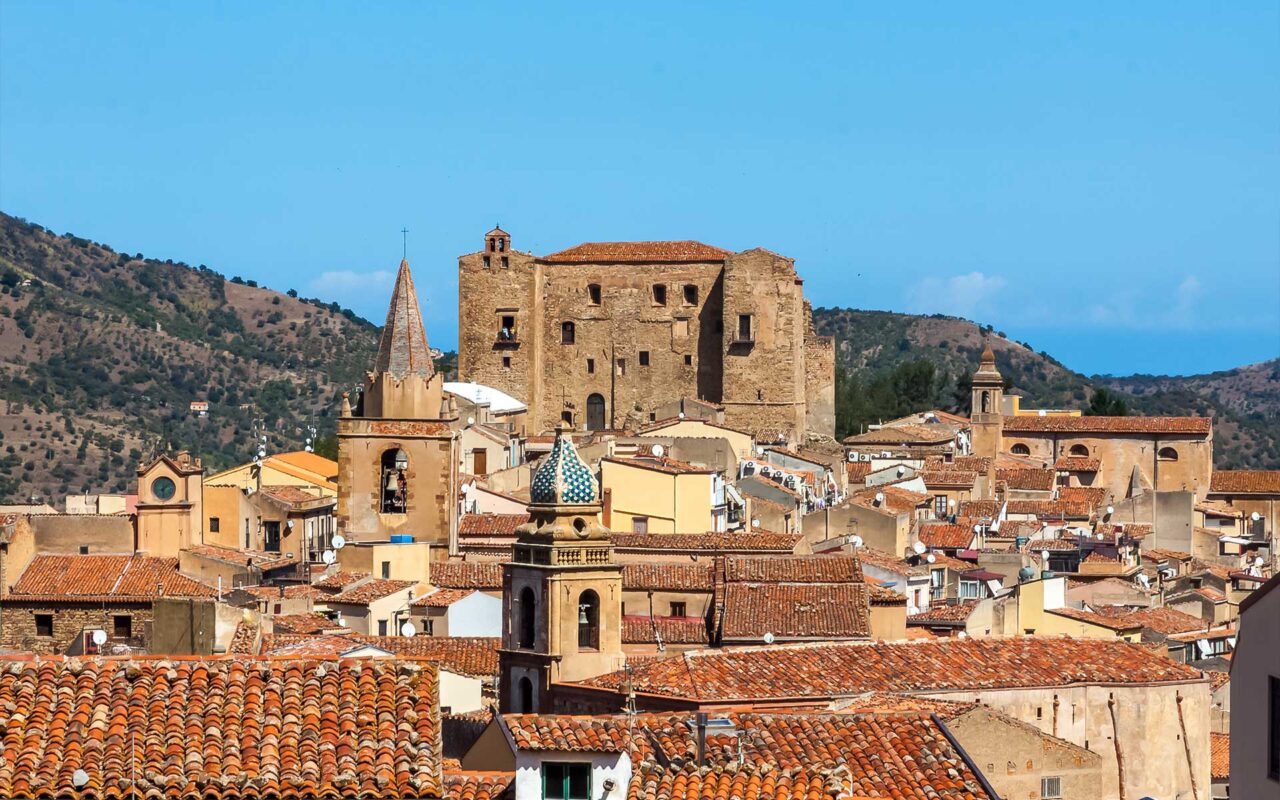Castelbuono rises about 423 m above sea level, on the slopes of the Milocca hill:
- Pollina to the north;
- San Mauro to the east;
- Geraci Siculo to the south-east;
- the Madonie massif to the south;
- Isnello and Gibilmanna to the west.
It is also part of the Parco delle Madonie. The town owes its origins to the Ventimiglias, Lords of the County of Geraci.
In the year 1316 Francis I of Ventimiglia built a castle there alongside the residence of the Ventimiglias using the structure that already dominated Ypsigro, a small hamlet with around 300 inhabitants around 1282.
Its building allowed the little community to grow and expand, until in 1454 when Giovanni I decided to move there with his court, allowing Castelbuono to become the most lively and vivacious town within the wide heritage of the Ventimiglia’s. Giovanni, during his move decided to bring with him the most important symbol of the Ventimiglias’ family: the sacred Relic of the skull of St Anne. It was later donated to William by the Duke of Lorraine.
The Castle and the St. Anne’s Relic
Both the castle and St Anne, who became the patron saint of the town, were to be two pivots of many events in Castelbuono. Already during the 15th century, the court decided to welcome many artists and men of literature from different cultures and of considerable prestige.
F. Laurana is one of the most famous who worked at the Ventimiglias’ mausoleum. Furthermore, in this period, both on the inside of the walls and the outside, convents, parishes have risen, everything with the interventions of the masters from Lombardy or Tuscany. The latter took care above all of the urban expansion of Castelbuono, which went from being a feudal-type town to assuming important characteristics of a capital-type town around the 16th century. The town’s cultural life is very lively and crucial.
With no doubt the Serpottas gave an important help in the evolution of the urban plan of the city, working at the St. Anne’s chapel. Furthermore, the castle has been rebuilt many times during the years, and the Ventimiglias, proving their love towards culture and arts, decided to offer the city a theatre. In those very years, many literary academies were active, and among the leading figures is certainly Torquato Tasso, who was also an artist at court.
In the last decades of the 18th century, however, this climate of evolution and production slowly began to change and even came to a standstill, leading up to the scenarios of the 19th century. This period was marked by the disappearance of the great nobility. Thus Castelbuono experienced the presence of other families that nevertheless kept its prestige high in the years to come.
Finally, in the biennium 1818-1820 various earth tremors damaged the Castle. Indeed, the Matrice Nuova lost its dome and bell towers and also the demolition of the last floor of the Castle. Around the first years of the 20th century. Around theearly 20th century, the Municipality acquired the Castle and, with it, the Relic of the Skull of St. Anne.


